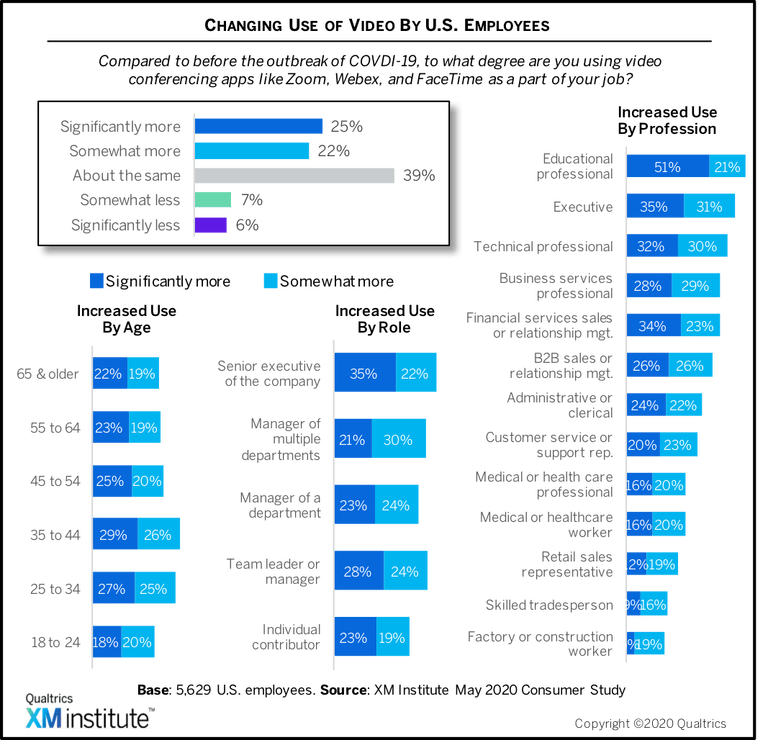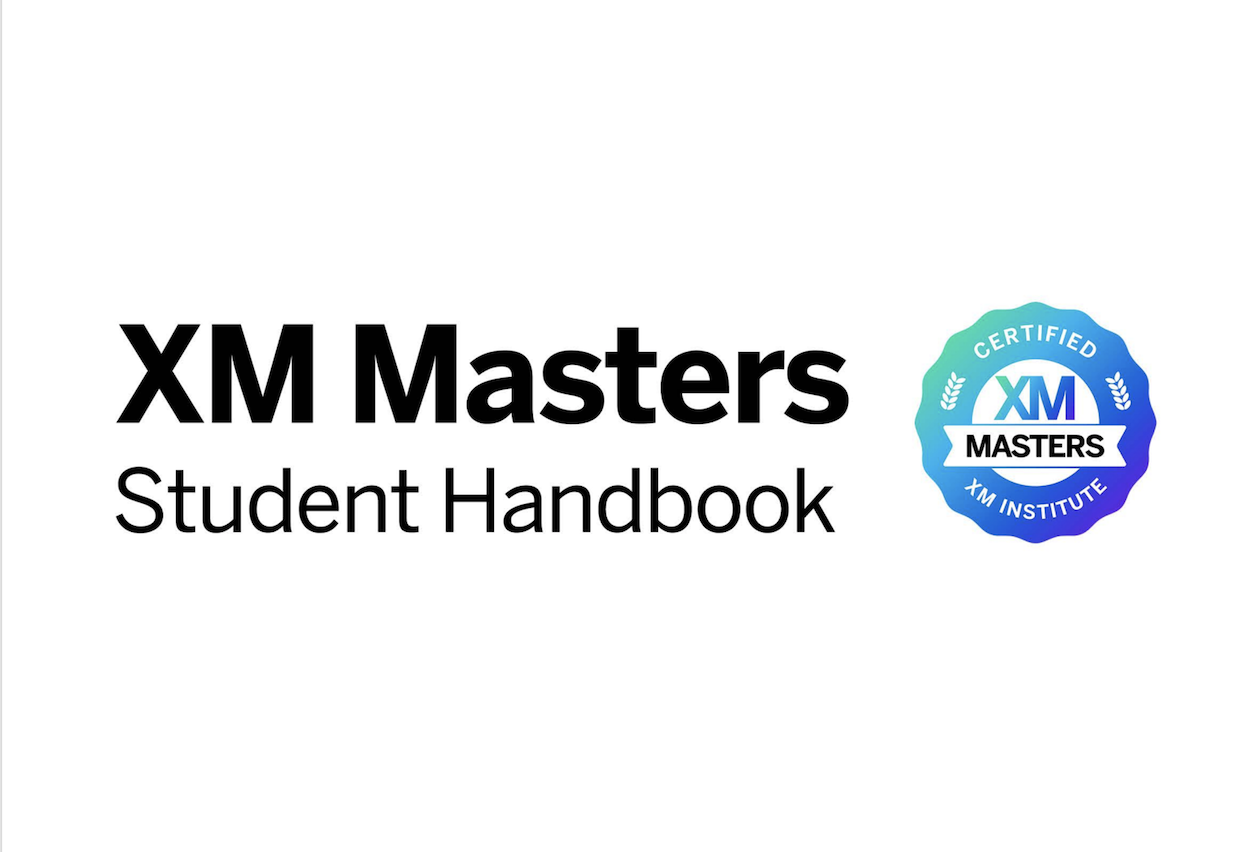To understand the impact that COVID is having on employees, we surveyed more than 5,000 U.S. employees. While 11% have been laid off or temporarily furloughed, the remaining employees provided feedback on their COVID work environment. We found that:
- Most people are working from home. Sixty percent of employees report that they’re working from home, and 31% have started to work from home for the first time.
- There’s a small drop in effectiveness. Twenty-nine percent of employees report that they have been less effective at doing their job since the outbreak of COVID, while a slightly smaller 24% report an increase in effectiveness.
- Employees are mostly satisfied with their employers’ responses. We asked respondents how satisfied they were with four aspects of their employers’ response to COVID. A majority of respondents are satisfied with all areas, and nearly two-thirds are satisfied with the company’s caring for and communications with employees.
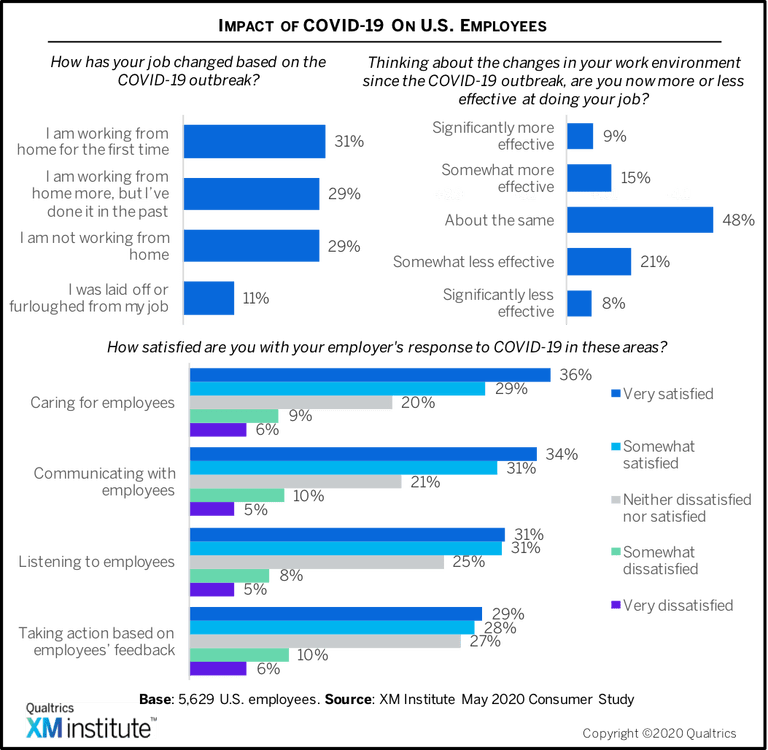
Educational Workers’ Effectiveness Drops the Most
We examined the change of effectiveness during COVID by profession, role, and age of respondents. This analysis uncovered that:
- Educational professionals are the most affected. Forty-seven percent of educational professionals report that they are less effective at doing their jobs, the most out of the 13 professions we examined. When looking at the difference in percentages between employees being more and less effective, healthcare workers experience the second-largest negative gap. Financial services sales and relationship management professionals are the only group with a higher percentage reporting that they are more effective than are reporting to be less effective.
- Only senior executives are more effective. We looked at five different roles, and only senior executives had a higher percentage of people who are more effective than less effective.
- Older people experience the largest effectiveness drop. Thirty-one percent of employees who are 65-years-old and older report a drop in effectiveness, compared with only 11% who report an increase. That 20-point gap is the largest across age groups.
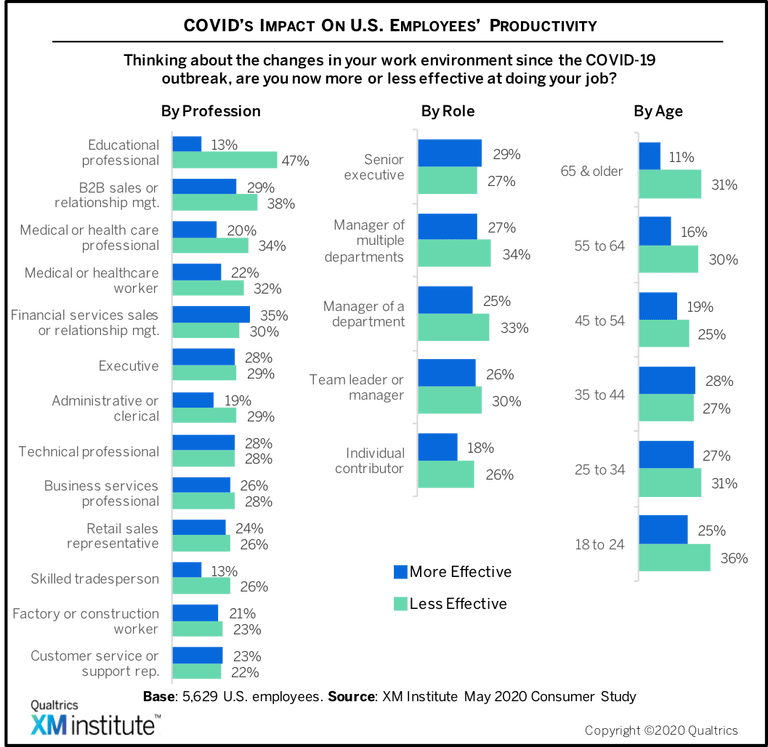
Healthcare Workers Are the Least Satisfied
We also examined how different types of employees feel about their company’s response to the COVID pandemic across the four areas: caring, communicating, listening to employees, and taking action based on employee feedback. Looking across different groups of respondents, we found that:
- Young employees are the least satisfied. Across the four areas we examined, the youngest employees are the least satisfied, falling well below the rest of the age groups. The oldest employees were the most satisfied with their employers’ caring, communications, and taking action on feedback. They tied with 25- to 44-year-olds for the highest satisfaction with listening to employees.
- Senior executives are the most satisfied. Across all four areas, senior executives are the role that is most satisfied with their company’s response to COVID. Only about 5% are not satisfied. The least satisfied group are the managers of multiple departments, the next most senior group below the executives.
- Healthcare workers are the least satisfied. Across three of the four areas, healthcare workers are the least satisfied. Factory and construction workers were the least satisfied with how their employees are listening to them. Executives, on the other hand, are the most satisfied professional group in all areas.
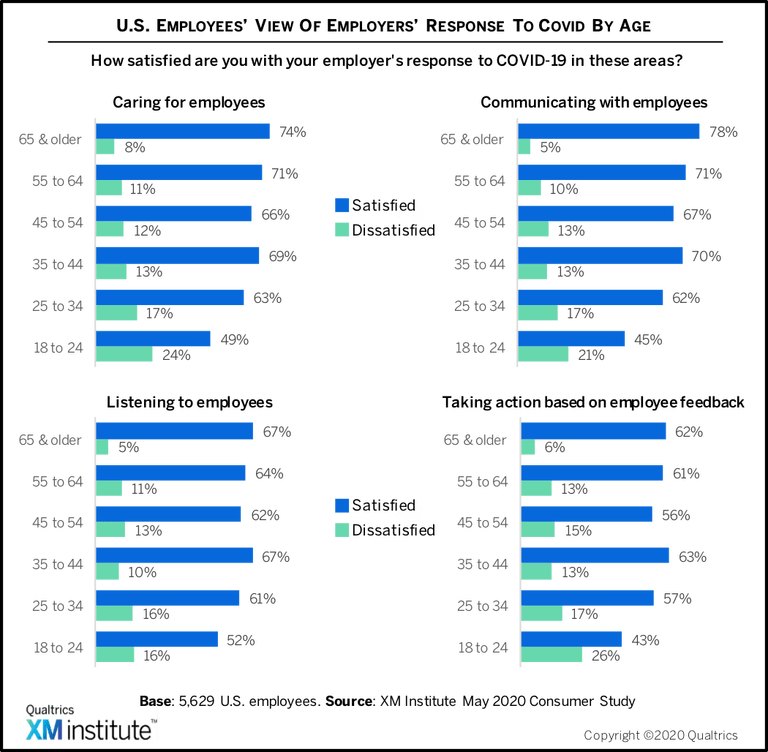
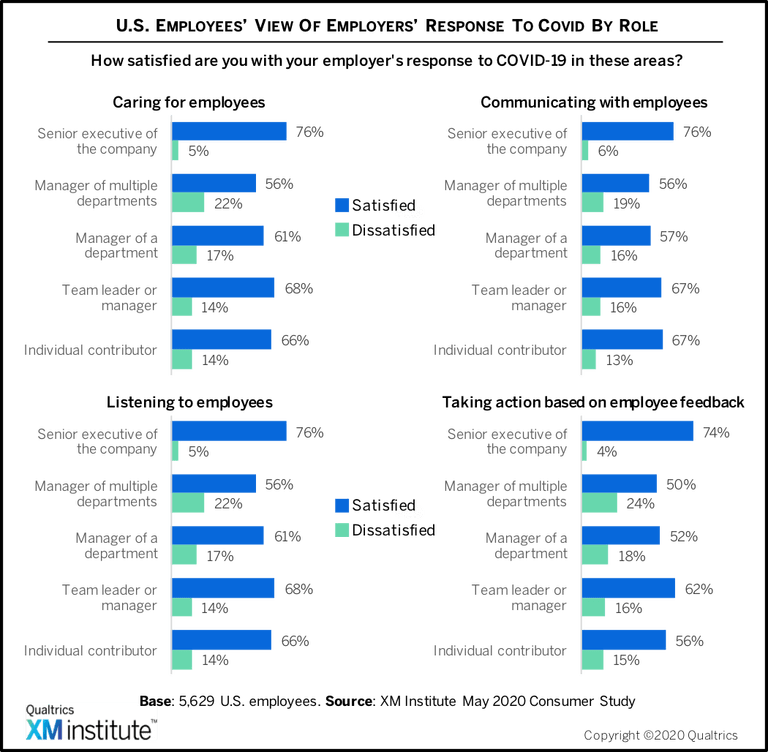
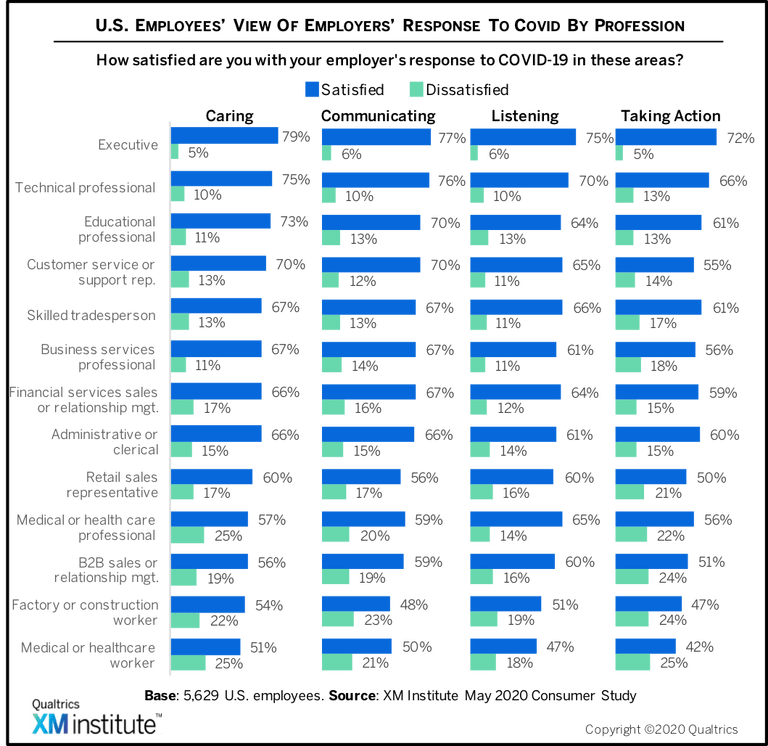
Increase in Workplace Videoconferencing
One of the big changes within companies is the use of video conferencing, so we asked employees about this tool. We found that 47% of employees are using more videoconferencing, while only 13% report a decline. Looking at the different segments shows the most increase with:
- 35- to 44-year-olds. Fifty-five percent of this group report an increase, the highest of any age group.
- Senior executives. At the high-end of usage, 57% of senior executives are video conferencing more. At the low end, only 42% of individual contributors report using more videoconferencing.
- Educational professionals. Seventy-two percent of educational professionals are using more videoconferencing. At the bottom of the list are factory and construction workers.
